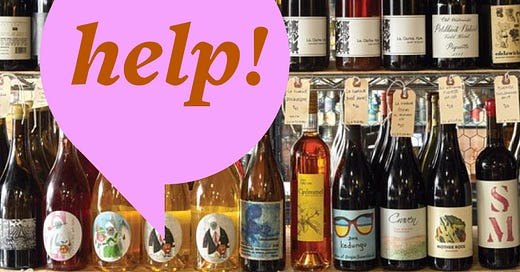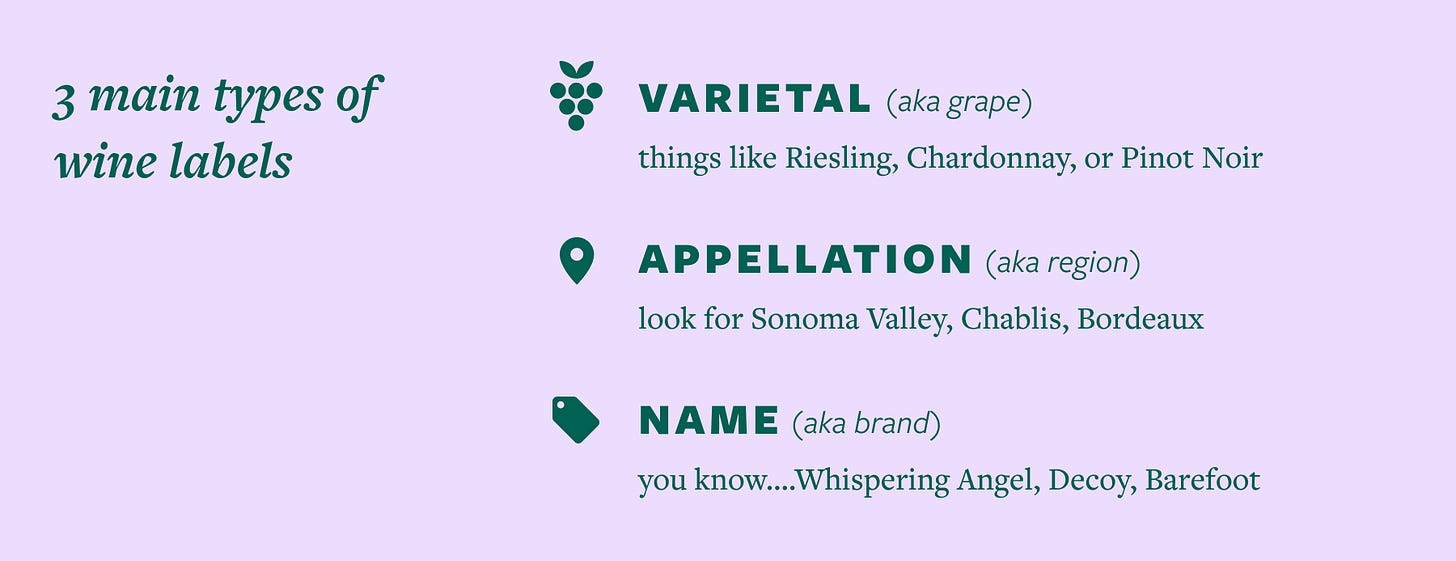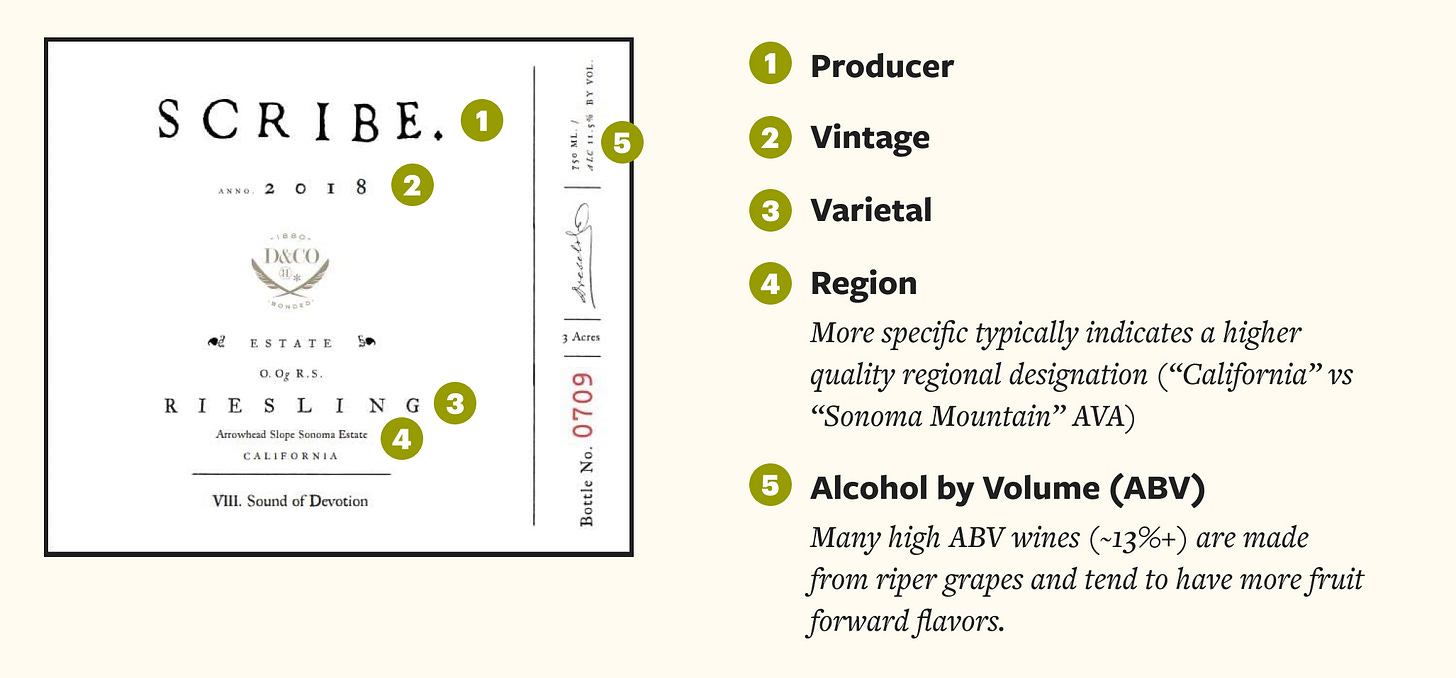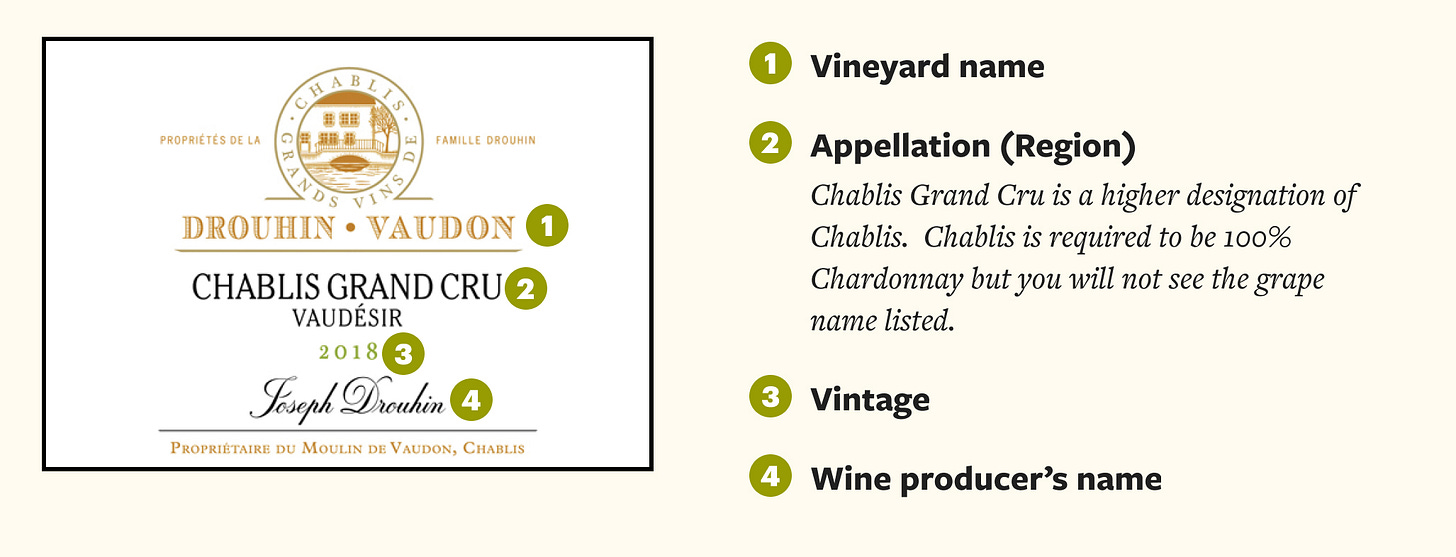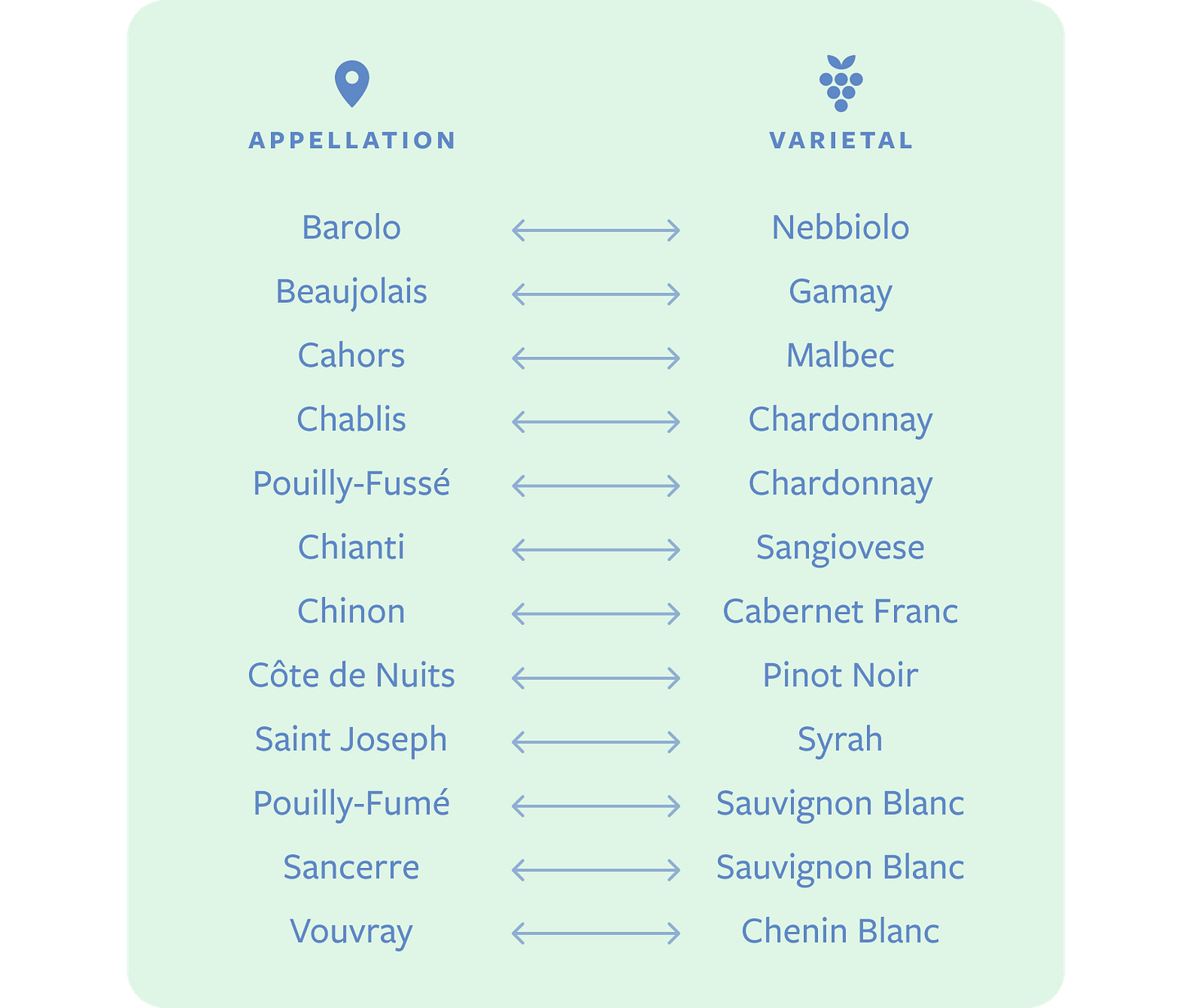How to read (and understand) a wine label
It's not just you, it's complicated. Here's a few tricks to decoding the label.
Hi and welcome to my new project, The Spritz! If you somehow ended up here and aren’t yet subscribed, you can do that right here 👇
As a highly regulated product that is made in over 70 countries, it’s no surprise that wine labels are complex and downright confusing. Labels vary across different countries and producers, and can include a wide range of information — some may include technical details or creative touches aimed at appealing to consumers while others provide almost no information about what’s inside the bottle. Learning how to read a wine label, can help you feel more confident navigating a wine shop and more reliably end up with a bottle you will actually enjoy.
The good news is that there are really only 3 “types” of wine labels. Having a basic understanding of these will help you decode what’s in the bottle.
Varietal labeling
Most New World wines are labeled by varietal — meaning the grape(s) that were used to produce the wine. This means you will usually see something recognizable like Pinot Noir or Chardonnay listed on the bottle.
👉 “New World” refers to wines produced in countries like the United States, Australia, South Africa, Chile, Argentina, and New Zealand.
Appellation labeling
Old world wines — from countries like Italy, France, Spain, and Portugal — are typically labeled by appellation (or regulated wine producing region) and may not even specify the grapes used to produce the wine. Each region has regulations and standards for what grapes are permitted in wines using the appellation label. This can get tricky because it means you need to understand the rules for each region to truly know what’s in the bottle.
For example, wines from Barolo must be made from Nebbiolo grapes while wines from Beaujolais use Gamay.
Appellation labeling likely began in the early days of wine production, when mixed grape varieties were grown side by side and blended to produce a local wine. Growers may not have had a full understanding of what varieties were planted in their fields.
I get it, appellation based labels feel intimidating and snobby. But some of the best wines fall in this category — and not just the crazy expensive ones. It can also be a much more reliable and consistent system for consumers. Appellation rules dictate not just which grapes can be used, but also how they’re grown and what styles of winemaking are permitted. This creates distinctive characteristics of certain appellations, like the acidity and flinty wines of Chablis or the refined bubbles of Champagne. If you buy a Chenin Blanc from South Africa, there are a lot more unknown variables — this doesn’t mean the wine can’t be great, but you are rolling the dice a bit more than if you pick a wine from an appellation you already know you love.
If you try a wine you like, I recommend doing a quick search to see what grapes are used in the appellation. I have heard so many people say they hate Chardonnay then rave about wines from Chablis or Pouilly-Fuissé.…which are both 100% Chardonnay.
Here’s a quick cheat sheet to get you started:
“Brand” labeling
Some wines are labeled with a brand or made up name. There are a few reasons that a producer might take this approach — this doesn’t always indicate inferior quality!
Regulation: Winemakers who are trying new things in highly regulated growing regions may decide to brand their wine since they are not able to use the appellation labeling system.
Simplification: If a wine contains a variety of grapes or lesser known varietals, a branded label may make the wine more approachable to the consumer.
Marketing tactic: Huge companies (such as E&J Gallo, the manufacturer of Barefoot) create a brand name for their wines. These companies spend a ton of money marketing their wines across the country — having a recognizable brand is a huge asset. Additionally, labeling the wine with a region or varietal is often not possible as they are importing grapes from many growers and using additives to create a consistent product.
Here are a few examples of branded wines that I have tried and really enjoyed:
Pomagrana - I can’t speak for the producer’s motivations but I assume this branding decision was made to better appeal to a larger customer base. This wine is 100% Trepat (grape) from Conca de Barberà in Spain. Few people know either of these but a pomegranate is a great way to set expectations for this bright, tart and fresh red wine.
The Perfect Red - this a really interested example of brand labeling. The producers of this wine feature a unique example the perfect, easy-drinking, red wine with each vintage. They have examples from California, France, Portugal, all bottled under their brand name.
Wabi Sabi White - My guess is that the producers of this wine wanted to indicate that this isn’t your typical California Chardonnay. Branding the wine, instead of focusing on the varietal, is a way introduce customers to this bright, mineral driven white blend.
My advice for these wines is to proceed with caution. If you are shopping at a reputable wine shop, there are likely some really interesting branded wines that offer great value for the price. Alternatively, if I’m in a less curated shop (i.e. a grocery store), I personally tend to avoid these and look for appellation or varietal based labels to have a better idea what I’m buying.
Still overwhelmed?
Here are a few things to look for to give you a better idea of what’s in the bottle
Alcohol by volume (ABV): the higher the alcohol, the more fruit forward the wine tends to be. ABV can also indicate how sweet a wine will be. For example, a 9% ABV Riesling will likely be at least a touch sweet while a 12%+ bottle will almost certainly be dry.
Vintage: just make sure there is a year listed somewhere on the bottle. With some exceptions for very expensive wines, not listing a vintage is a red flag
Region: If you are spending >$12 on a bottle of wine, I recommend looking for something more specific than a country or state. Calling out the region the grapes were produced can be a good sign of the wine quality regardless of a label type.


